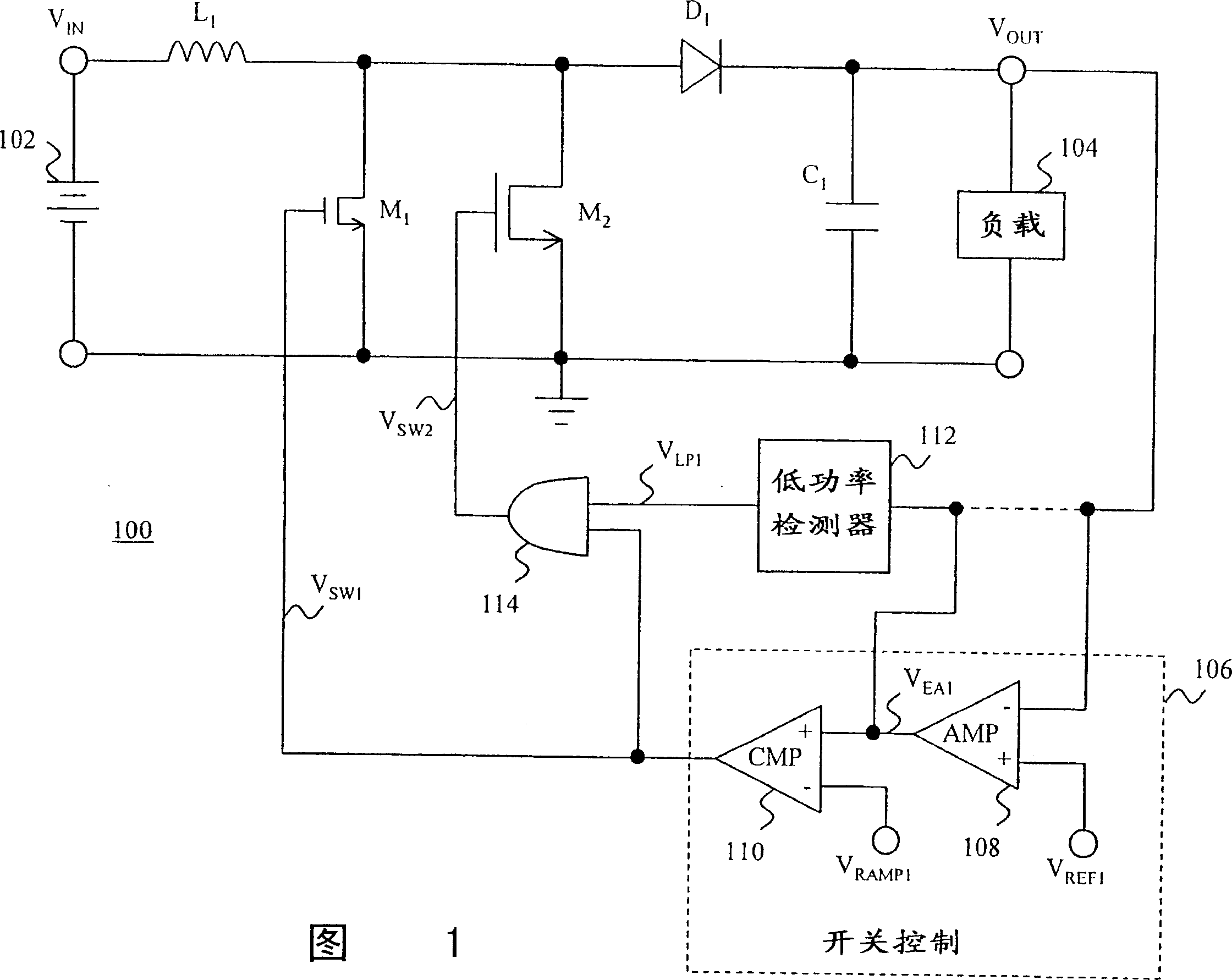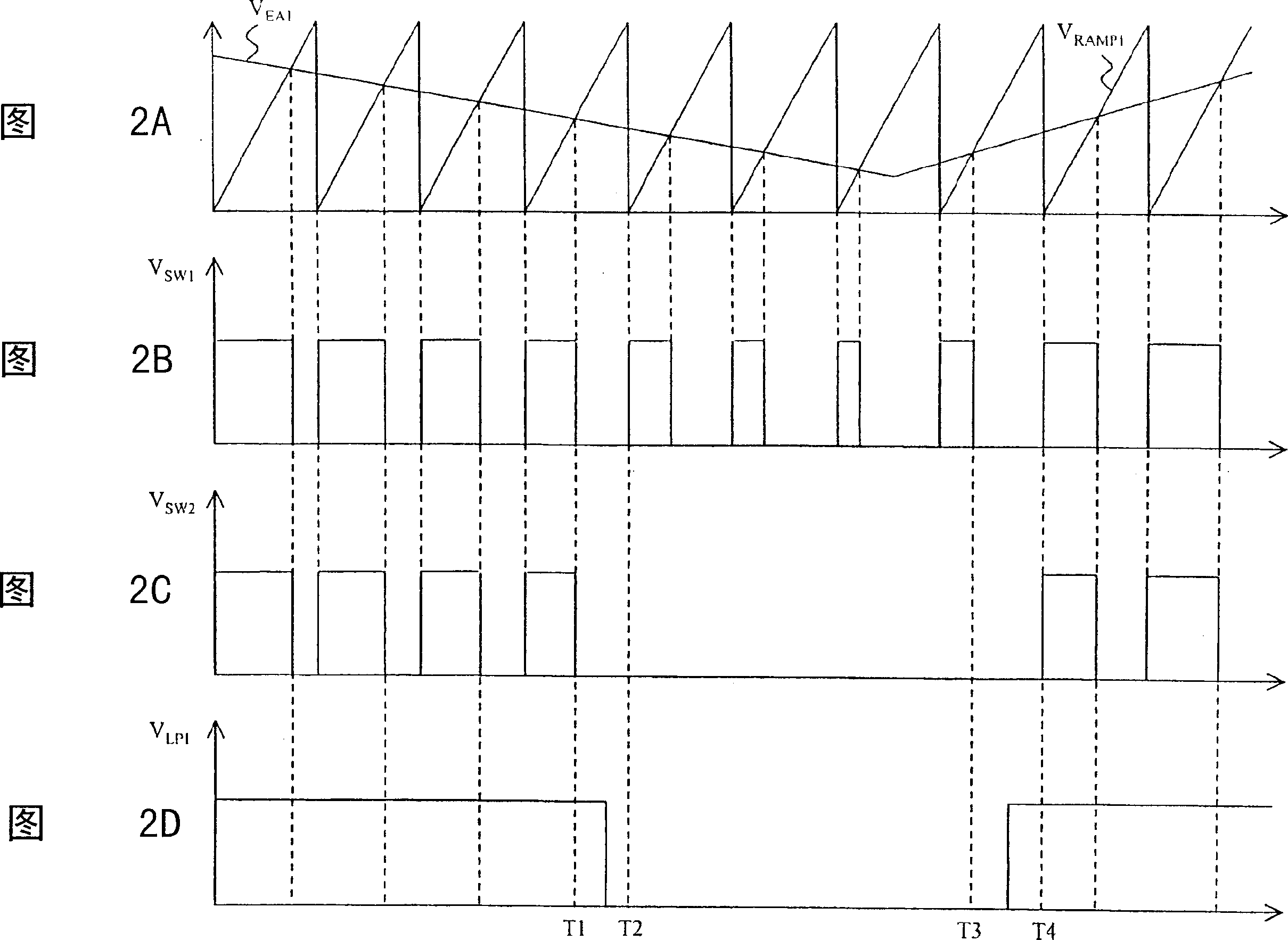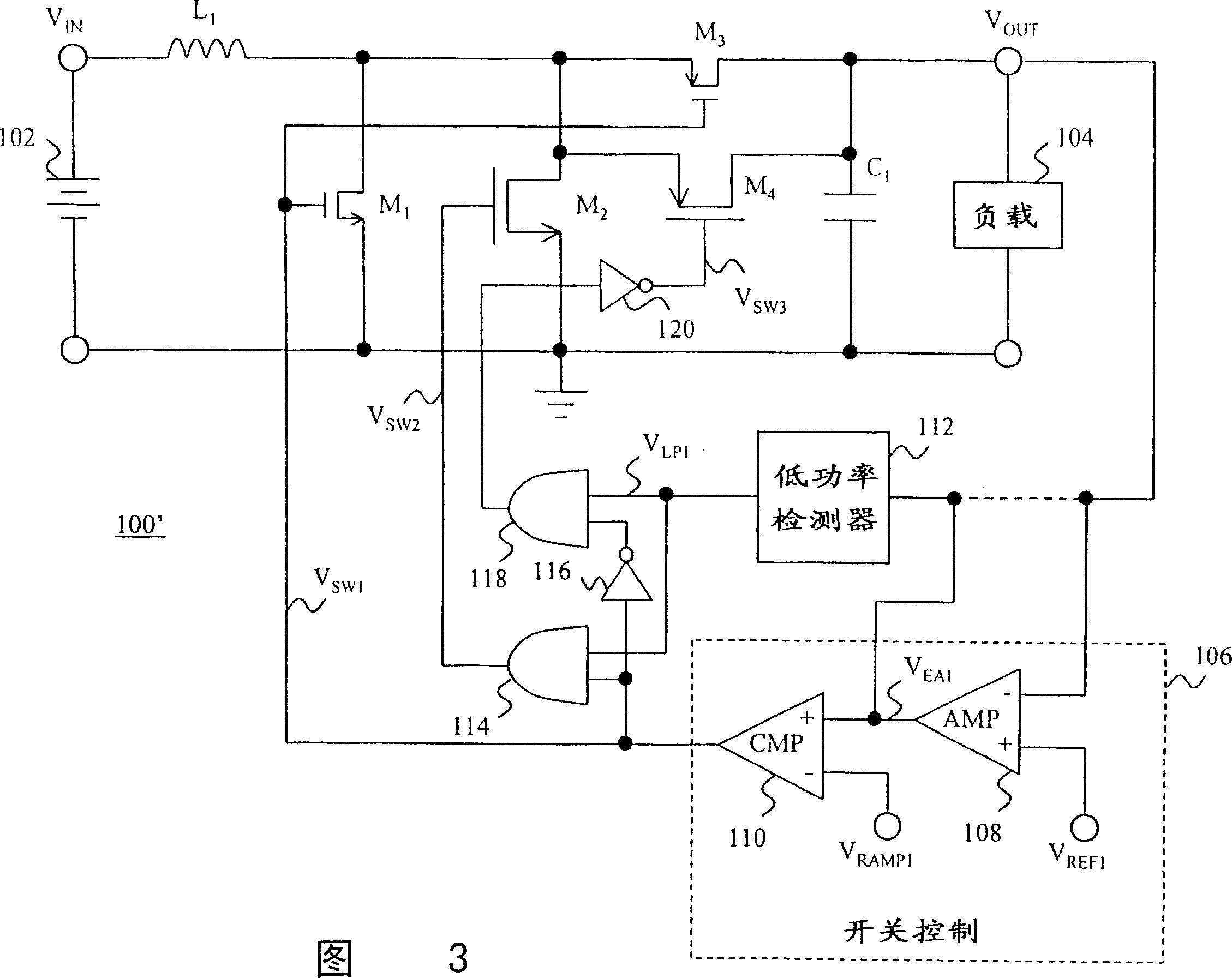Low power mode and feedback arrangement for switching power converter
A switching power and converter technology, which is applied in the direction of converting DC power input to DC power output, output power conversion devices, instruments, etc., can solve the problem of switching loss, reduced efficiency, ineffective use of battery power, and battery charging cycle. reduction and other issues
- Summary
- Abstract
- Description
- Claims
- Application Information
AI Technical Summary
Problems solved by technology
Method used
Image
Examples
Embodiment Construction
[0029] FIG. 1 is a schematic diagram illustrating a switching power converter 100 with a low power mode according to the present invention. The power converter 100 is coupled for receiving power from a power source 102 . Power source 102 may be, for example, an unregulated direct current (DC) power source such as a battery or a rectified alternating current (AC) signal. power supply 102 forms a connection with such as an inductor L 1 The first terminal of the reactive element is coupled to a voltage V in . Inductor L 1 The second terminal of can be coupled to the n-type field effect transistor M 1 the drain of the n-type field effect transistor M 2 the drain, and the diode D 1 the anode. Diode D 1 The cathode can be coupled to a capacitor such as C 1 The first end of the reactance element, and the first end of the load 104 . Transistor M 1 and M 2 source, capacitor C 1 The second end of the load 104 and the second end of the load 104 can be coupled to the ground. ...
PUM
 Login to View More
Login to View More Abstract
Description
Claims
Application Information
 Login to View More
Login to View More - R&D Engineer
- R&D Manager
- IP Professional
- Industry Leading Data Capabilities
- Powerful AI technology
- Patent DNA Extraction
Browse by: Latest US Patents, China's latest patents, Technical Efficacy Thesaurus, Application Domain, Technology Topic, Popular Technical Reports.
© 2024 PatSnap. All rights reserved.Legal|Privacy policy|Modern Slavery Act Transparency Statement|Sitemap|About US| Contact US: help@patsnap.com










